Thessaloniki gets ready for its metro launch in November
The underground rapid transit lines have been under construction for almost two decades due to various project delays
 TheMayor.EU logo
TheMayor.EU logo Take a walk on the urban side and feel the pulse of these cities course through your veins
Last week, we visited some of the most intriguing squares in European cities. Today, we’ll continue on a similar journey at another urban location that often serves as the business card of any self-respecting urban area – the mighty boulevard.
Initially, the word, which provenates from the term “bulwark” referred to roads that sprang up on at the markings where city walls used to be. Nowadays, however, these are usually some of the most attractive main streets cutting right through the heart of a city. The places where you go to see and to be seen. The space where urban traffic and pedestrians still coexist is a complex system that often defines the feel of what a city is.
Here are some interesting boulevards that you should consider taking a stroll on during your next visit to the respective cities where they are located. This is where you’re guaranteed to be able to feel the living pulse of the city any day of the week.
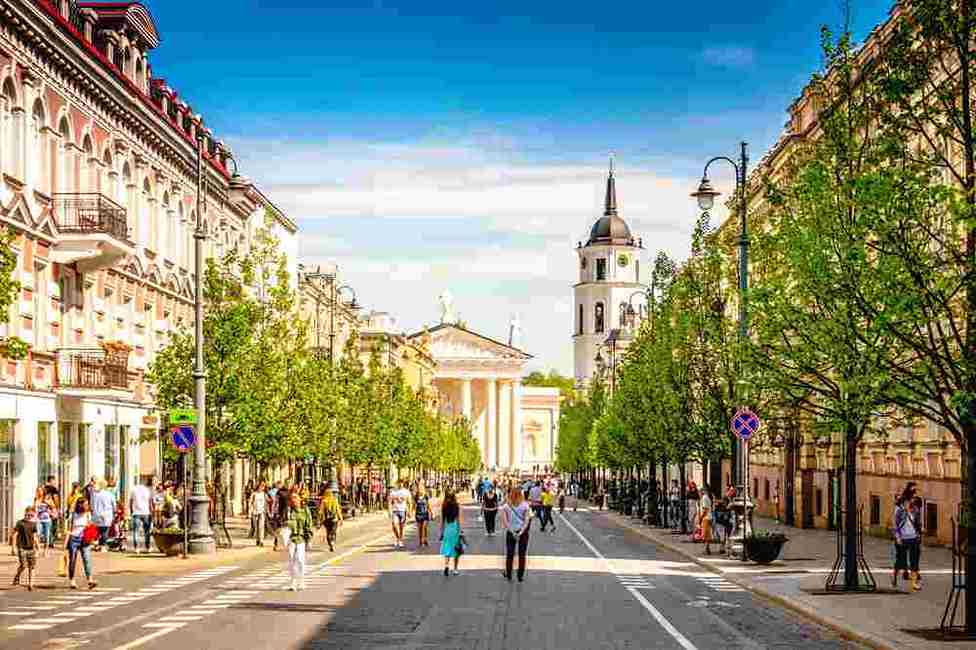
A pedestrian moment on Gediminas Avenue. Source: Depositphotos
The Lithuanian capital’s main thoroughfare has been around for almost two centuries now and the roster of its name changes reflects the tumultuous history of the region, which has seen it being occupied by different powers and different regimes.
It began as St. George Avenue before becoming Mickiewicz Street, in honour of a composer during a period when the city fell target of the expansionist policy of the Polish state (1922-1939). Then the Soviets moved in, and it goes without saying – they had to rebrand it. First, they called Stalin Avenue and later – Lenin Avenue.
This is also where parades celebrating International Workers Day on 1 May were organized in Soviet Lithuania, however, it was in its vicinity where the first anti-Soviet civic protests and actions started taking place in the late 1980s, which demanded political and cultural freedom for the Lithuanians.
Already, in 1989, the street got its current name to honour a medieval Grand Duke, who is considered a national hero by the Lithuanians. It was shortly after that the country got its long-awaited sovereignty.
Gediminas Avenue connects the historical city centre, Cathedral Square with the Seimas Palace (the Parliament). And the cool thing is that in the evenings, it becomes a pedestrian street.
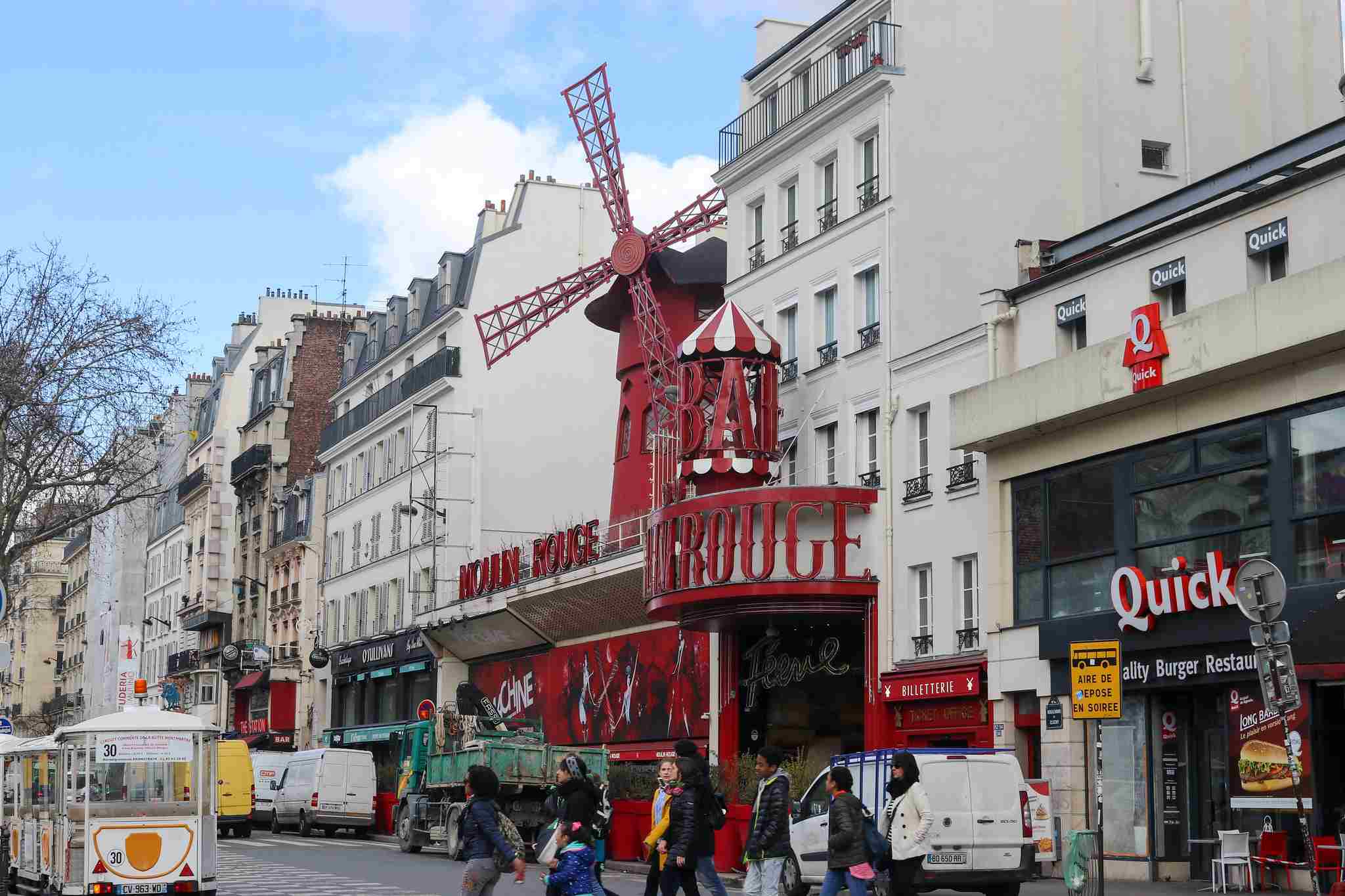
Moulin Rouge Cabaret is one of the highlights of the boulevard.
Source: Joan on Flickr (CC BY-NC 2.0 DEED)
Yes, we all know about Champs-Elysees, but Paris is much more than that and it’s always worth discovering new facets of the exciting French capital. So, why not head to Boulevard de Clichy in the bohemian district of Montmartre next time you’re in for a visit?
It runs from Place de Clichy to the Rue des Martyrs. It is known for its lively and artistic atmosphere, as well as its, hm… erotic heritage. Walking on this road you feel cool in the knowledge that this same pavement had been traversed by iconic artists like Degas, Toulouse-Lautrec, Van Gogh, and Pablo Picasso. In their days of struggle, Montmartre was where they could afford to live and the street still carries the memory of their rental abodes.
Back in the 19th century, this was also Paris’ liveliest nightlife street, way before there was even a concept of nightlife in the rest of the world. All the famous cabarets that you’ve heard of, and some less famous, had their address on Boulevard de Clichy. Café du Tambourin was also there. It was the preferred hangout of artists, writers and critics. This was where Toulous-Lautrec painted Vincent Van Gogh enjoying a glass of absinthe.
Almost every building holds the memory of that era. If you’re a fan of art, you owe it to yourself to go there.
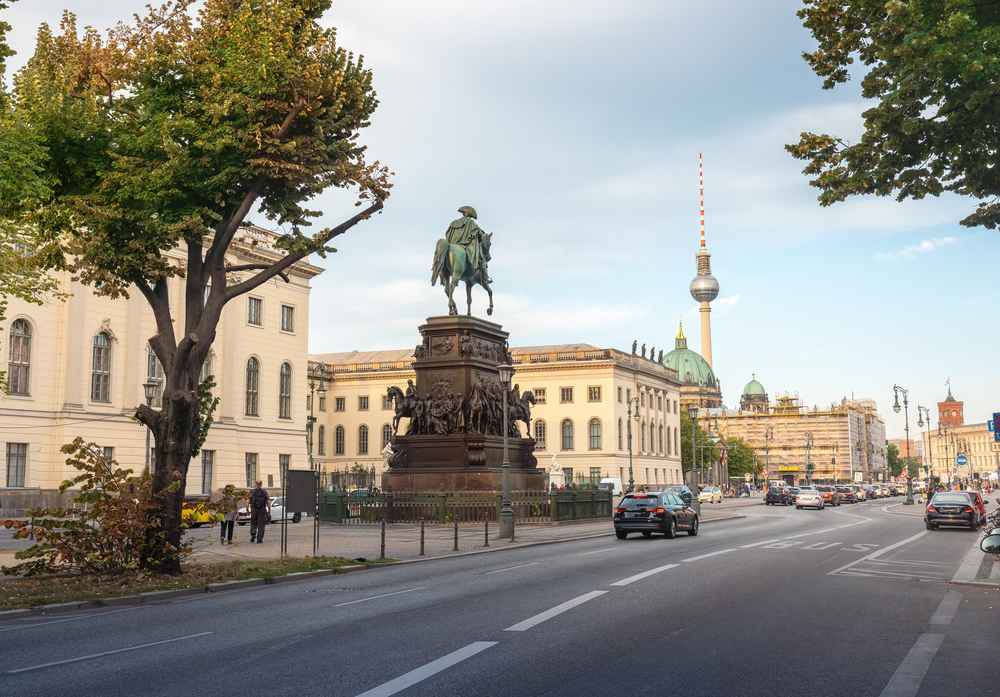
Yes, the linden trees are still lining parts of the boulevard. Source: Depositphotos
This boulevard is the historical and cultural centre of Berlin, linking the Brandenburg Gate with the Museum Island. It is a majestic and impressive street, with monuments, statues, palaces, churches, and museums that tell the story of the city’s past and present. Most of the heritage sites date to the Prussian Baroque age.
Its name is also probably the most poetic among all boulevards in existence. It means “under the linden trees” and it refers to the trees first planted in 1680 by Princess Dorothea. The tradition has been kept and there are about 1,000 linden trees lining the boulevard today along most of its 1.5-km long stretch.
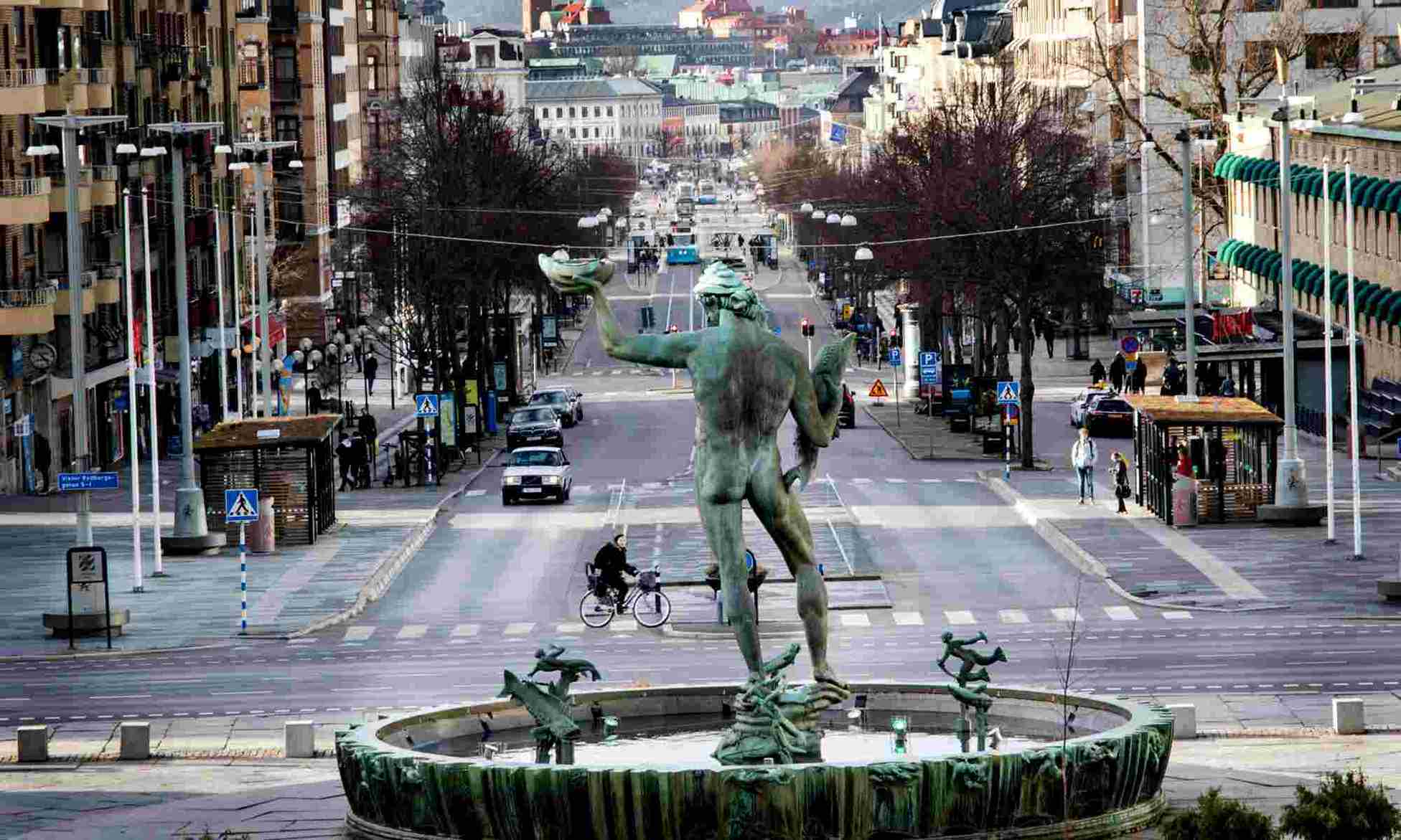
The original name of the boulevard was Kungsportsavenyen.
Source: City of Gothenburg/ Frida Winter
This boulevard, simply named The Avenue in local parlance, is the main street of Sweden’s third city, running from the old city gate to the Götaplatsen square, where the main cultural institutions are clustered. It is a lively and vibrant street, with shops, restaurants, bars, and events that attract locals and visitors alike.
Stretching for about a kilometre, Avenyn offers visitors the chance to drop in at three distinct and quite unique museums, such as the Gothenburg Museum of Art, Röhsska (where you can marvel at the achievements of Nordic design) and the Universeum Science Centre.
When visiting Avenyn, make sure that you also find time to get lost in the side streets as well, especially in the Vasa neighbourhood. You’ll find many appealing bars, restaurants and independent shops there, where you can go and create your own memories from Gothenburg.
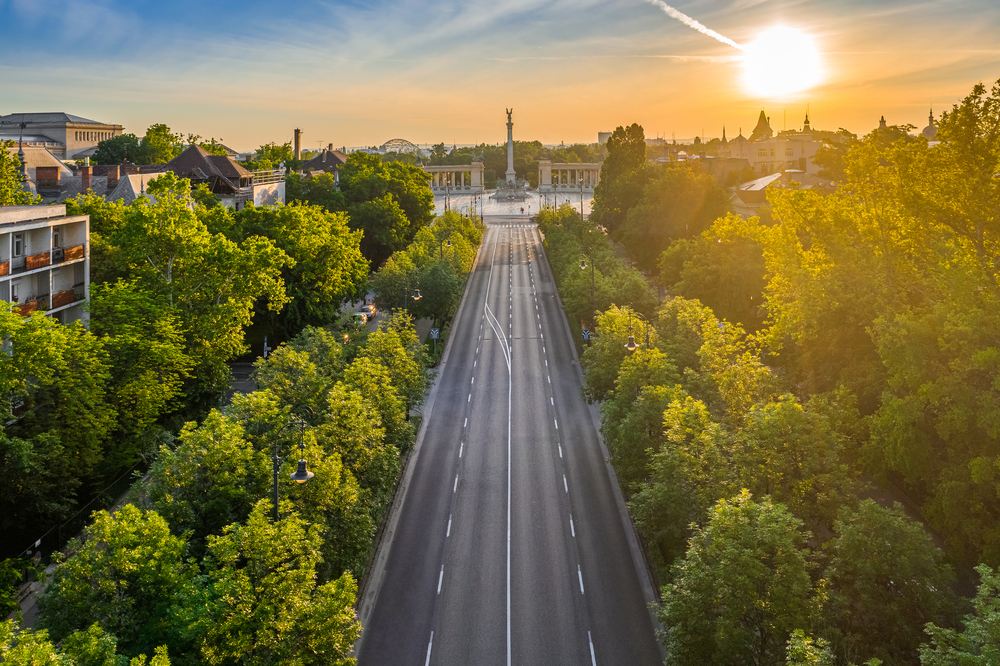
Andrassy Boulevard contains tons of history. Source: Depositphotos
This boulevard is a UNESCO World Heritage Site, representing the golden age of the Hungarian capital during the 19th and early 20th centuries. It is a wide and elegant street, named after Count Gyula Andrassy, a Prime Minister during the 19th century who supported the project. Andrassy Avenue features a dizzying array of neo-Renaissance and Art Nouveau buildings, such as the Opera House, the House of Terror, and the Heroes’ Square.
What’s interesting about this thoroughfare, though, is not only its street-level heritage but also the one you can find many metres below. This is where the M1 line of the Budapest Metro has been ferrying commuters since 1896, making the subway network the oldest in Continental Europe and the first to be electrified.
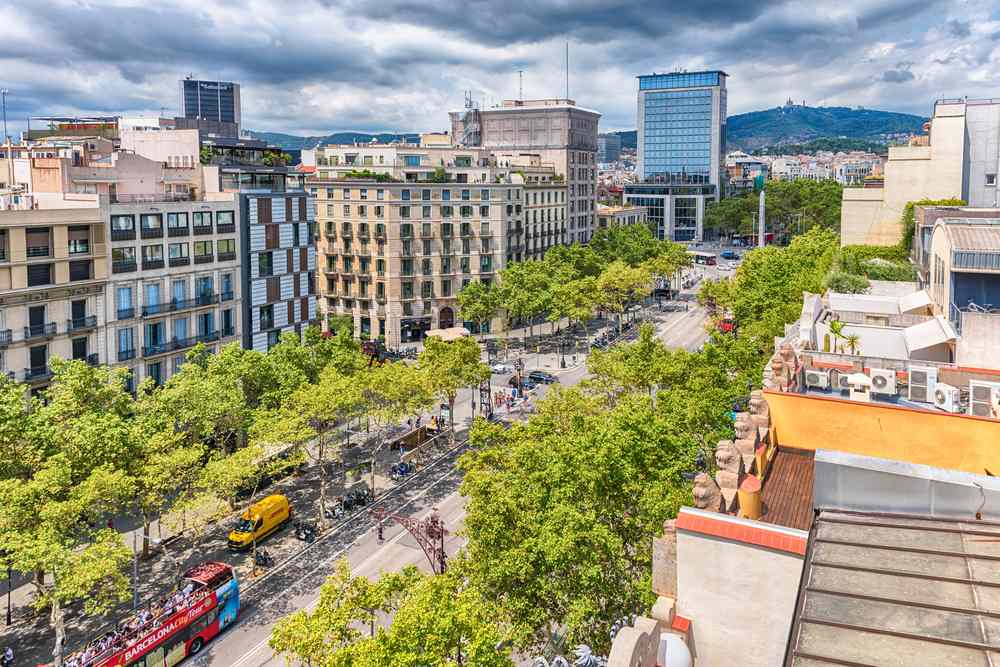
Passeig de Gracia is the glamourous face of Barcelona. Source: Depositphotos
Barcelona has been a meticulously planned out city since the 19th century and any aerial photo of the Catalan capital reveals the almost hypnotizing quality of its street grid, including several boulevards. This is best illustrated in the district of Eixample, whose crowning jewel ought to be the Passeig de Gracia – considered the most expensive street in Barcelona.
Its prestigiousness index surely has to do with the many boutique shops lining the sides and attracting throngs of tourists from around the globe. However, it all began somewhat practically and modestly. The local government simply wanted a road to connect Barcelona to Gracia, the quaint district, which 200 years ago was a separate town. The road was designed to be wide (at 42 metres) and this immediately got the attention of the young aristocratic males who wanted to show off their horses and horse-riding skills there much like youngsters like to boast with their cars today. Some things never change.
The true golden age for the avenue, however, came during the beginning of the 20th century with the rise of the Catalan modernist artistic movement. Passeig de Gracia then got the chance to be a canvas for showcasing the city’s unique architectural and artistic talent.
It was in that period that the most famous buildings were built. Think of Casa Batlló and Casa Milà (by Gaudi), as well as other landmarks, such as Casa Amatller and Casa Lleó Morera.
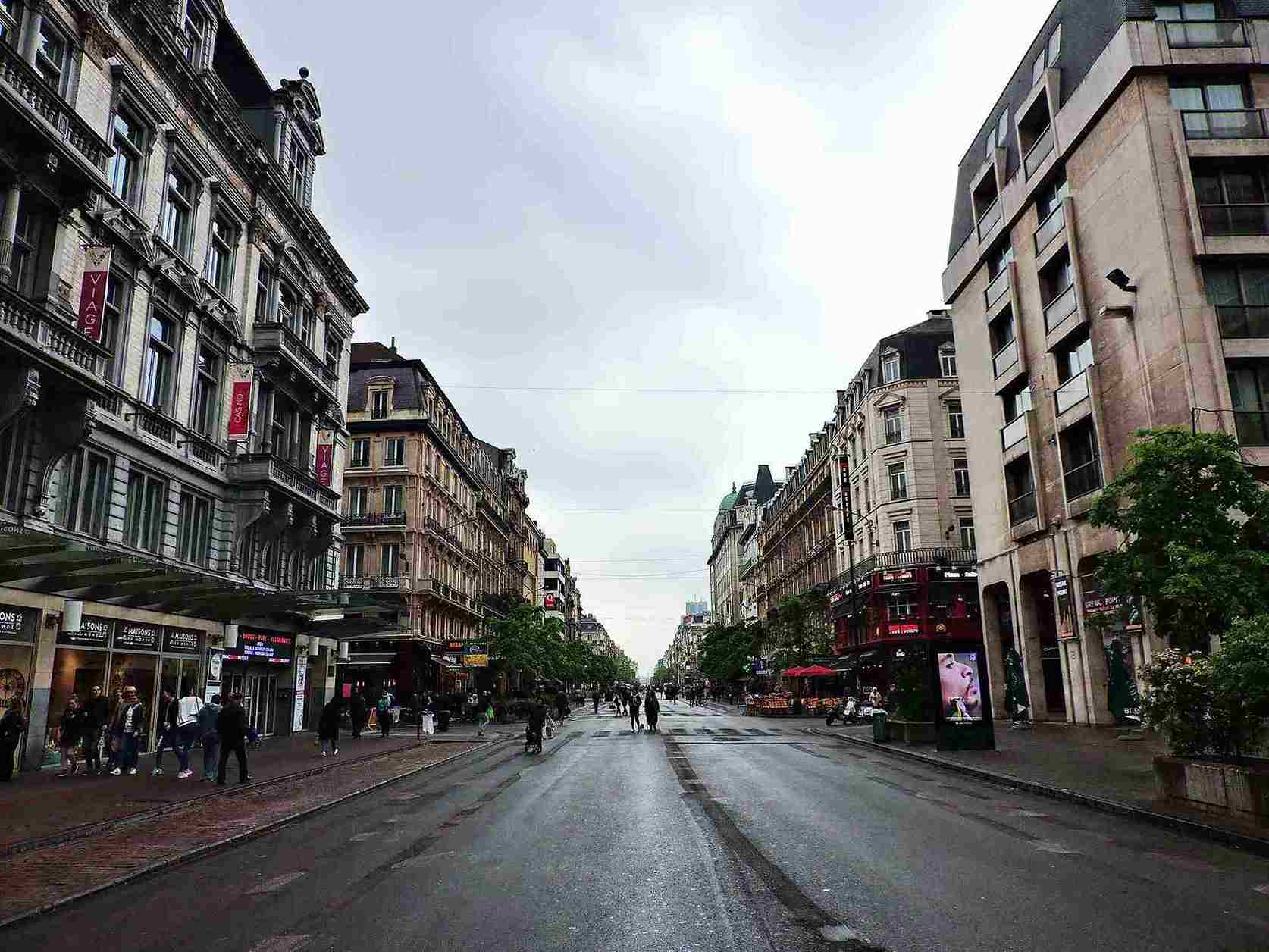
Boulevard Anspach honours a former mayor of Brussels. Source: Dimitris Kamaras on Flickr (CC BY 2.0 DEED)
Finally, there’s a boulevard that honours the name and legacy of a city mayor. Baron Jules Anspach was the one who gave the impetus for the creation of one of Brussels’ main thoroughfares. You might find it interesting to know that its design meant covering up a stretch of the river Senne, which flowed through the city back then. Since then, the river has been diverted in order to make space for the Brussels Metro.
Boulevard Anspach is a perfect place to admire Modernist buildings, much like you would in the Passeig de Gracia in Barcelona. The Brussels avenue also showcases some eclectic architectural examples, such as Café Sesino, apartment residences and the former Brussels Stock Exchange.
The boulevard is also interesting because it shows the potential for civic action on the part of the residents. A decade ago, people dissatisfied with the mobility policy of the local government started organizing “protest picnics” to prevent traffic from going through. This eventually forced the administration to pedestrianize part of the thoroughfare.

The underground rapid transit lines have been under construction for almost two decades due to various project delays

Now you can get your wine in Talence by paying directly in Bitcoin

That’s because the state has to spend money on updating the railway infrastructure rather than subsidizing the cost of the popular pass

Rethinking renewable energy sources for the urban landscape

The examples, compiled by Beyond Fossil Fuels, can inform and inspire communities and entrepreneurs that still feel trepidation at the prospect of energy transition

Now you can get your wine in Talence by paying directly in Bitcoin

The 10th European Conference on Sustainable Cities and Towns (ESCT) sets the stage for stronger cooperation between the EU, national and local level to fast track Europe's transition to climate neutrality.

At least, that’s the promise made by the mayor of Paris, Anne Hidalgo

The underground rapid transit lines have been under construction for almost two decades due to various project delays

At least, that’s the promise made by the mayor of Paris, Anne Hidalgo

Hostal de Pinós is located in the geographical centre of the autonomous region

Despite its church-y name, the district has long been known as the hangout spot for the artsy crowds

Urban dwellers across the EU are having a say in making their surroundings friendlier to people and the environment.

Forests in the EU can help green the European construction industry and bolster a continent-wide push for architectural improvements.

Apply by 10 November and do your part for the transformation of European public spaces

An interview with the Mayor of a Polish city that seeks to reinvent itself

An interview with the newly elected ICLEI President and Mayor of Malmö

A conversation with the Mayor of Lisbon about the spirit and dimensions of innovation present in the Portuguese capital














